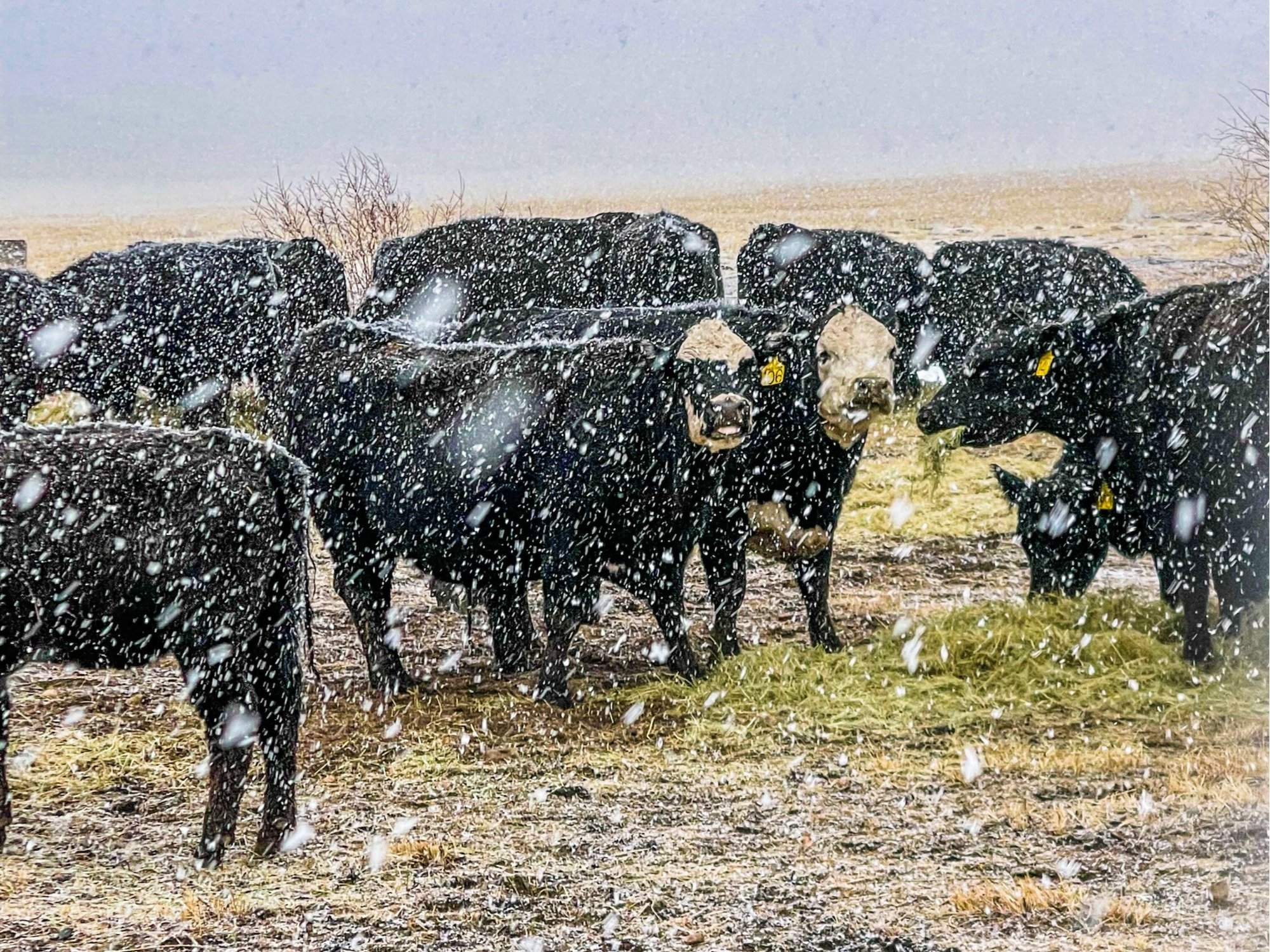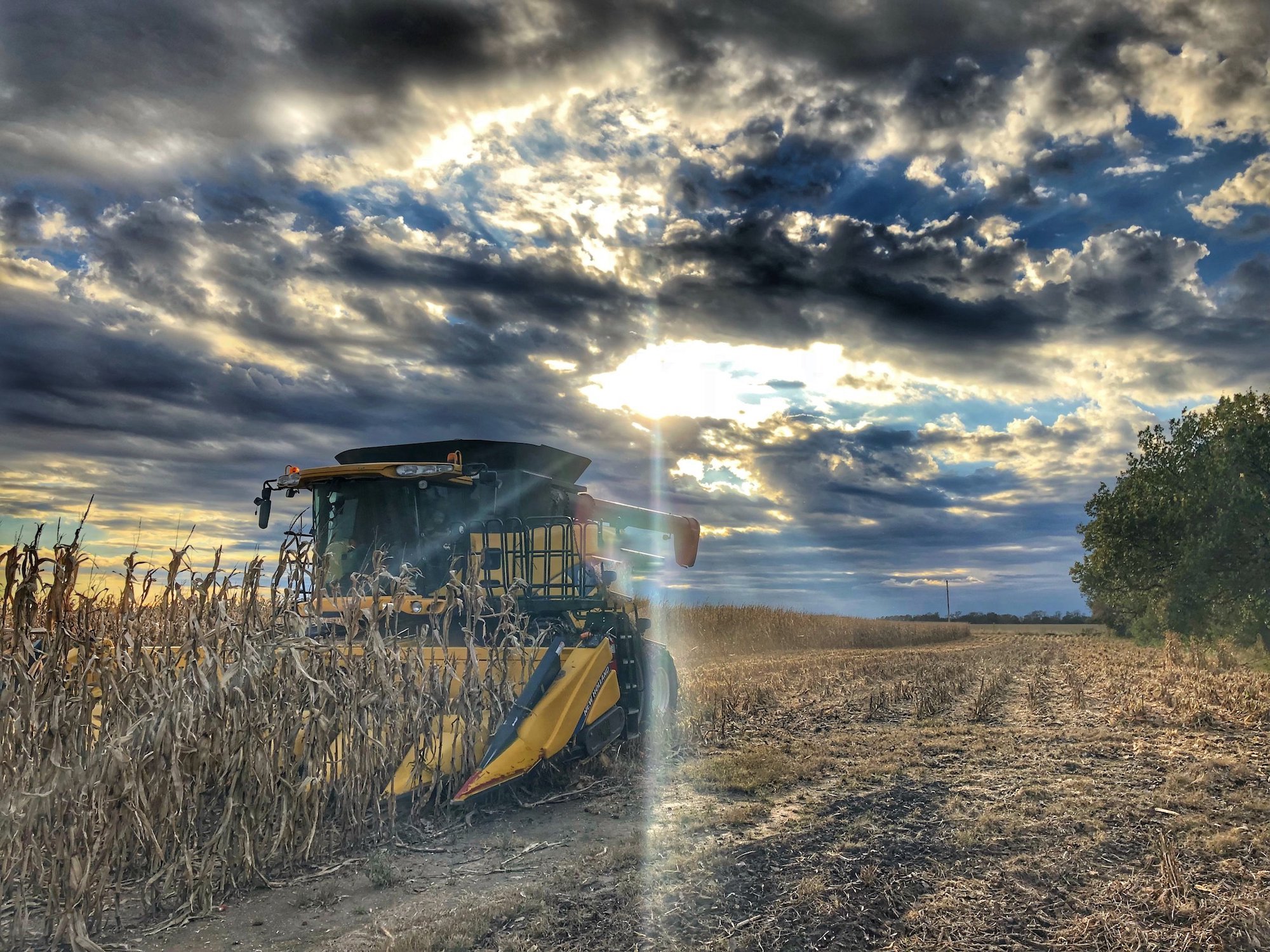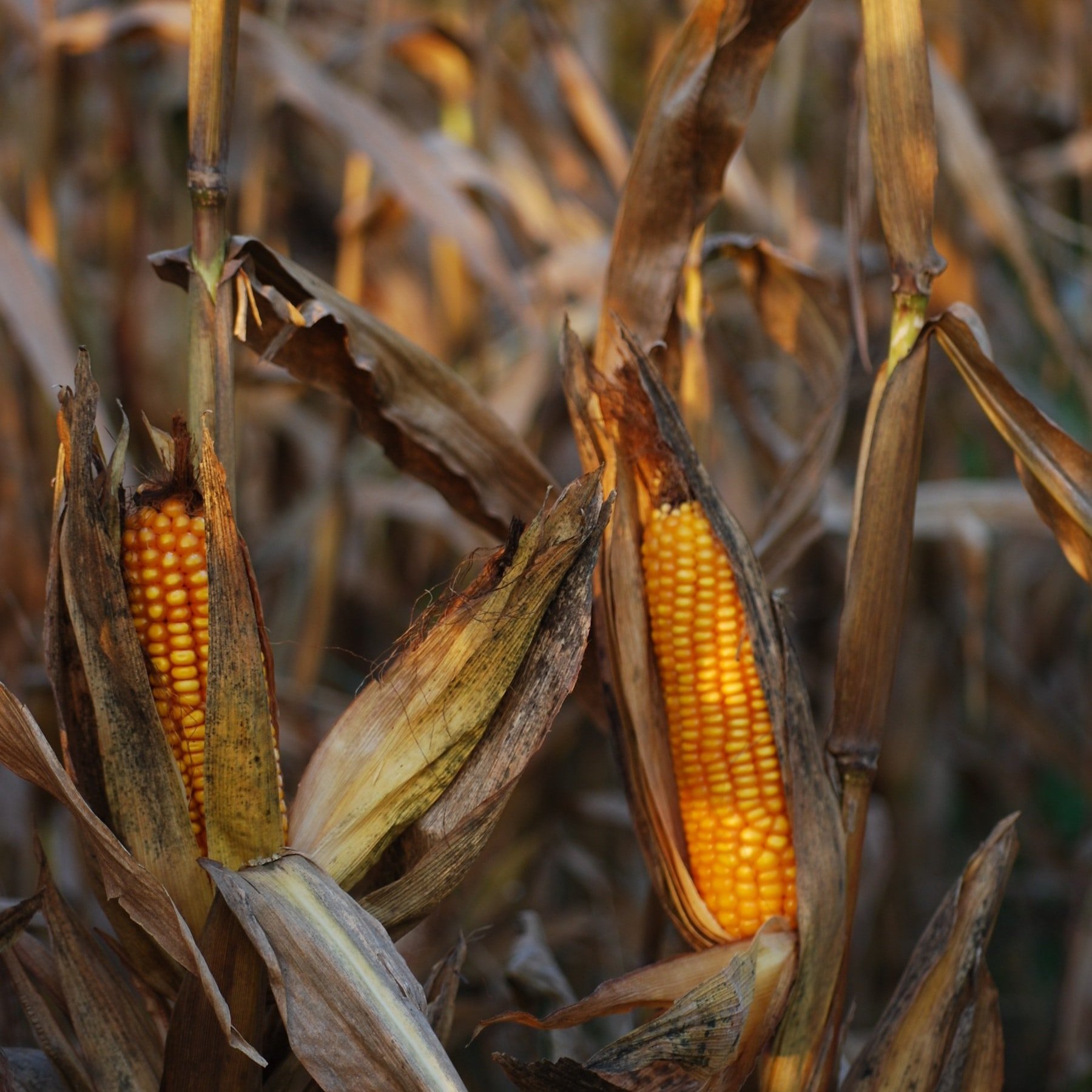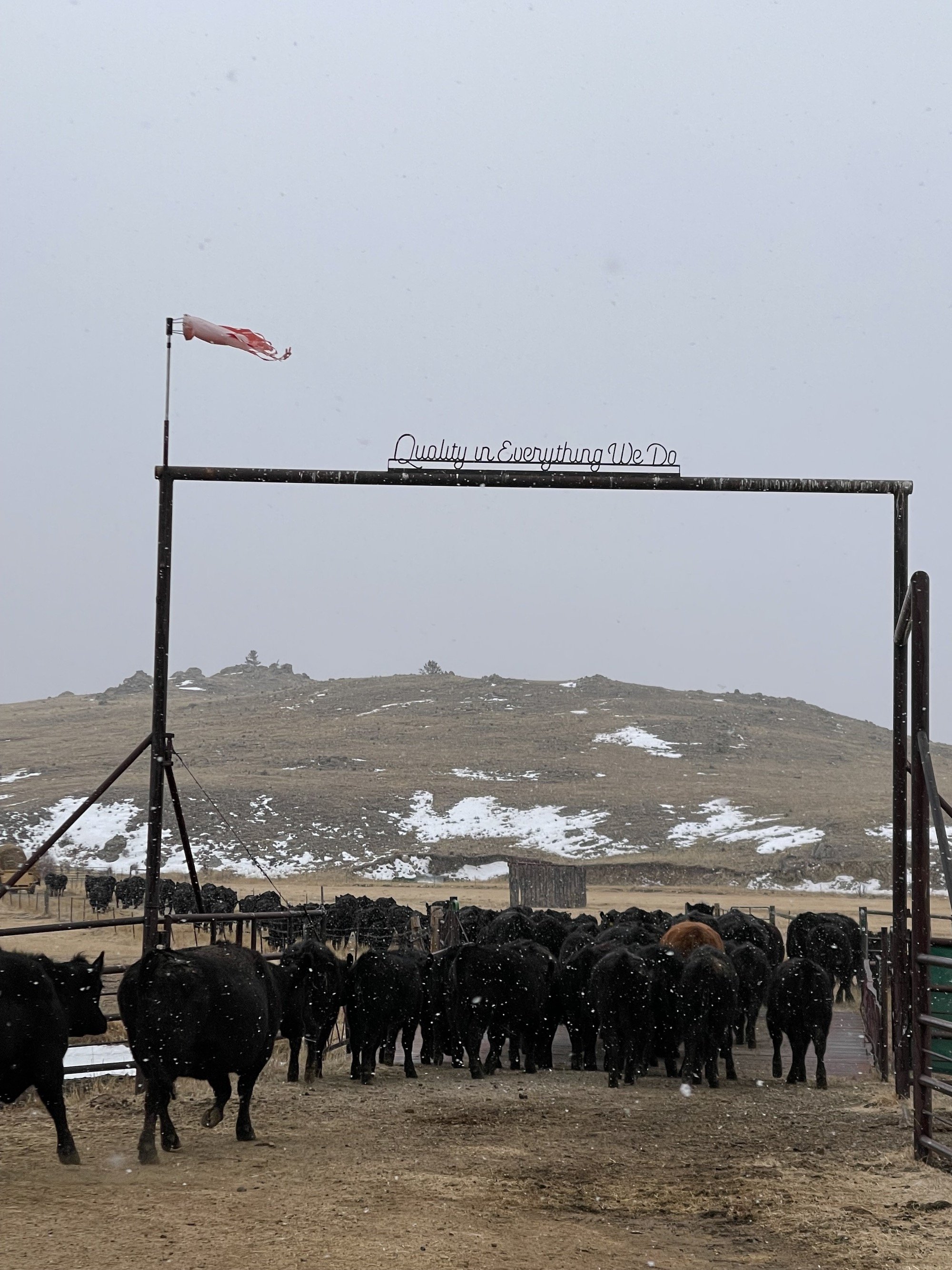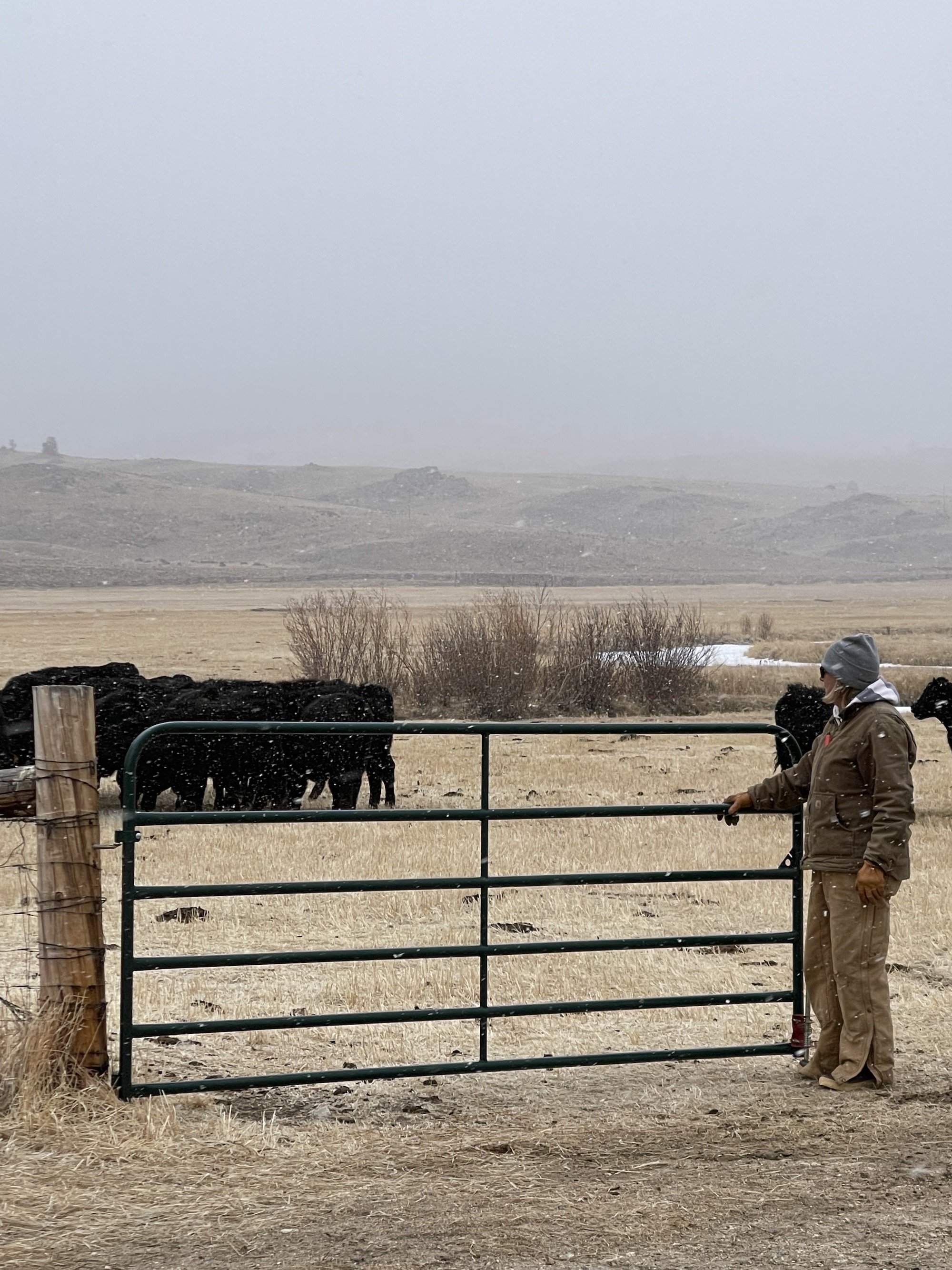Why Did We Send Our Cows to Nebraska For the Winter?
A couple family surgeries led us to explore moving our cows to Nebraska for the winter.
This was actually the best thing for our cows because of benefits of feeding cattle on corn stalks.
Most winters our cattle stay at our ranch headquarters. We feed them daily, and keep a close eye on them, despite the common negative temperatures and sever windchill. It is definitely not the nicest season to be outdoors in South Park, Colorado. ;)
Going into this winter (2021-2022), we knew we’d have to make a change. My Dad was due for two hand surgeries, and me, well, I was scheduled for a major back surgery in January. After some family discussion, it only made sense to ship the cattle somewhere else besides the ranch for a few months while we had our surgeries and healed.
For a cow-calf producer like us, reducing winter feed and labor costs are of high importance.
Double O Farms in Nebraska
Enter Double O Farms (Jena and her husband Levi) into the equation. As corn farmers in central Nebraska, they have plenty of cornfields, and they agreed to take our cattle in for the winter to graze their downed corn.
Jena Ochsner and I actually met in 2019 in California at a “retreat” of sorts where we learned all about shipping our beef nationwide. Our friendship was natural; it came easily and started over email. Jena was “under age” at the time to rent a car. She had reached out to me for a ride from the airport to the retreat. I was smitten with the innocence of my newfound friend. Of course we’d give her a ride! The rest is history.
Photo Courtesy of Double O Farms
Fast forward three years to this winter. After a few phone calls and visits to each others’ farms, we loaded up our cattle onto big cattle pot trucks and waved goodbye as our cows headed east to the Nebraska corn fields.
Benefits of Cattle Feeding on Corn Stalks
According to the University of Nebraska Institute of Agriculture and Natural Resources, about 45% to 50% of the aboveground biomass produced by the corn plant is residue, prime for feeding livestock. Given the amount of residue left behind, cattle grazing corn fields is beneficial for both the cow/calf producer (us), and the farmers who farm that ground (Double O Farms).
Our cattle are able to break down corn stalks more efficiently than simple natural weathering might.
Moreover, our cattle are able to essentially turn the corn stalks into manure, returning nutrients back to the soil, and ultimately benefit the next planting seasons crops.
Additionally, excess corn residue can hinder soil warm-up in the spring and impede seed placement during planting.
Keeping cattle on the fields during the winter is an effective way to ensure the corn residue is efficiently removed between harvest and the next planting season.
Corn Residue
Variety of Nutrient Content of Corn Plants
I found it interesting that each part of the corn plant varies widely in its nutrient content. When the cattle are first turned out into a new corn field, the cows will first seek out downed ears of corn. As they work their way foraging through the fields, they help eliminate volunteer corn as they first seek the stray kernels. Once the ears and kernels are all consumed, they will eat the husks, and lastly, east the leaves.
Supplements of Hay, Salt, and Minerals
If there is extended inclement weather, the cattle are supplemented with quality hay (and protein cake if necessary) to ensure they are warm and have full bellies. Jena herself was in charge of ensuring they had clean, ice free water each day, and for that we are very grateful. They are also provided with free feed access to salt and minerals in which they consume as necessary. All in all, they do well on corn stalks, and in the end, we all benefit!
Nebraska farmers like to start getting back into their fields to prepare for the upcoming planting season in early March. Hence, that’s our clue to get our cattle off their ground and back to Eagle Rock Ranch headquarters. Moreover, it is critical that we ensure our mama cows are home before they start calving in late April, early May. Once they arrive home to our ranch headquarters, they are kept in pastures close to the ranch so that we can monitor the upcoming calving season.
A Great Decision for the Cattle and the Farm
Sending our cattle out east was a great decision for our cattle, and for us. Jena and Levi took impeccable care of our herd, and we appreciated every extra ounce of effort they put into ensuring that our cattle were well cared for. The cattle came back in great shape, and they are ready to calve within the next 60 days. The cattle took their job seriously and cleaned up the majority of the corn residue in the fields that they wintered in. We are excited to have them home, and I know that the Oschner’s are excited to get back into their fields.
Watch the footage of their return, and be sure to follow us on Instagram!

